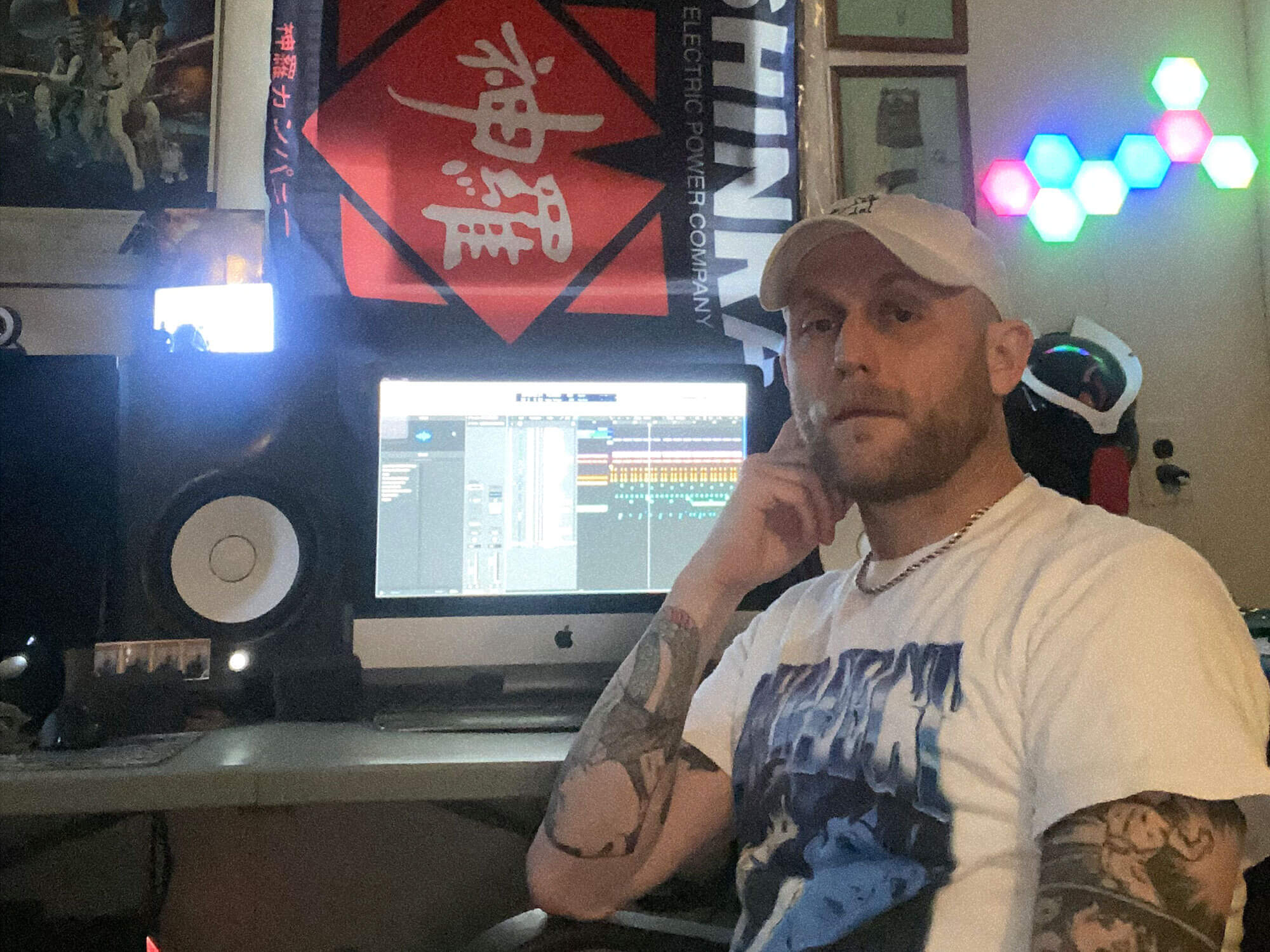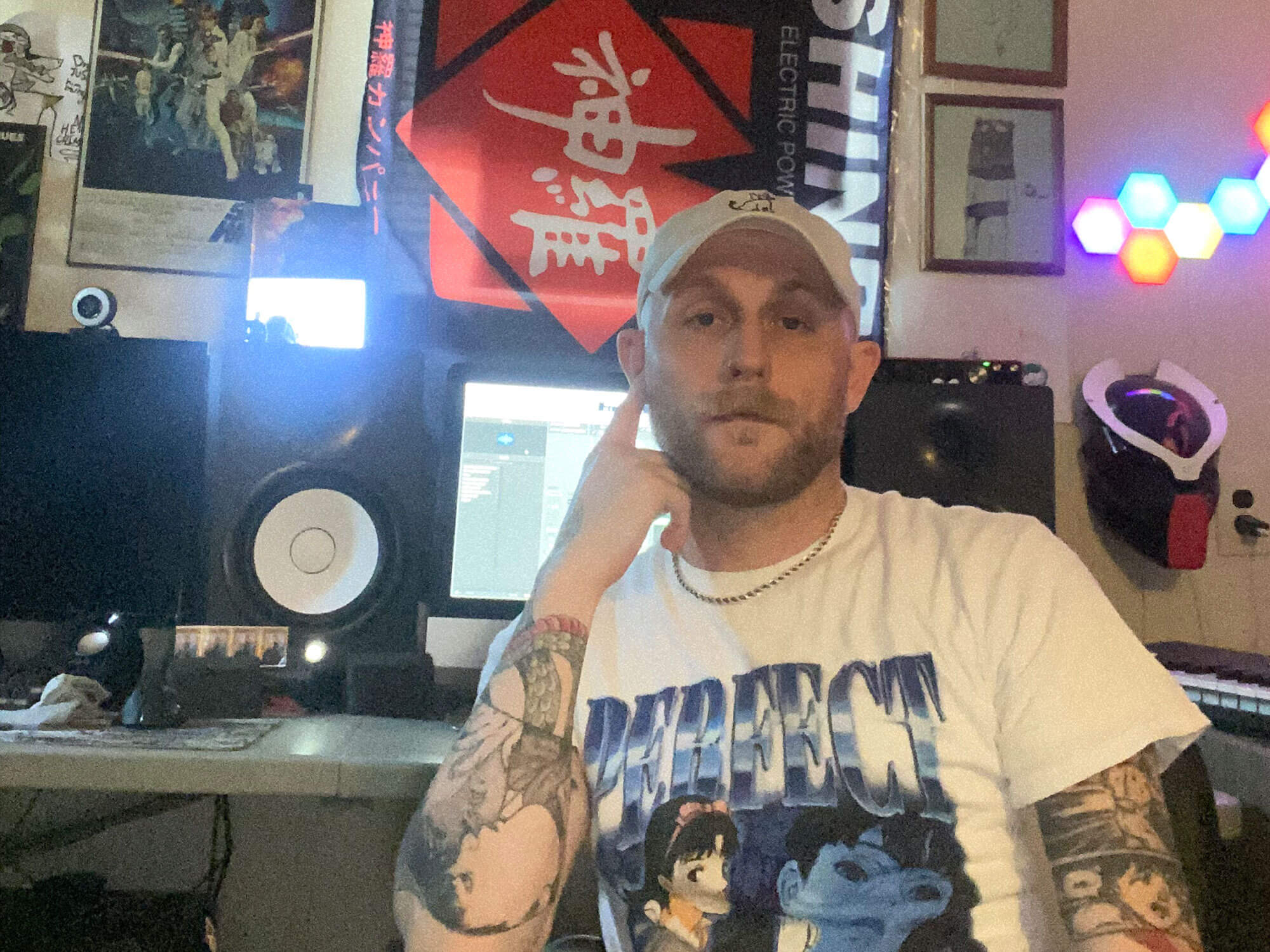Mixing elements of a project is like “playing Tetris”, says Breauski
The diverse EDM producer talks plugins, subtractive EQing and how sidechaining and EQing allow elements of a track to coexist

Breauski in his home studio
In partnership with BandLab Opportunities.
As part of MusicTech’s BandLab Opportunities collaboration, we’re showcasing an artist with a BandLab account who deserves more recognition for their music production skills. The artist in the spotlight is Breauski. He’s an upcoming artist from the city of Charlotte, North Carolina, who makes variety of genres in EDM, from bass house to trap, to dubstep and drum ‘n’ bass.
We’re instantly hooked by Breauski’s – real name Jake – sound and approach to sound design, so ask him what his approach is to making music. We cover what hardware he uses, how he creates intriguing sounds using plugins like Serum, and his tips for EQing, and letting all the components of a song fit together like blocks in a game of Tetris.
Hey Jake! What’s your story?
I got into music production in high school. A buddy of mine’s older brother had turntables, and he was really deep into house music, so we would go to my buddy’s house and mess around on his techniques and his brother’s Technics [turntables]. Then we started getting really heavily into drum ‘n’ bass in the mid-late 90s. It kind of just grew from there. We started buying our own turntables, spinning parties and stuff like that.
I’ve been doing music production as a labour of love. It’s not something that can sustain me financially right now, but whenever I can get a chance to be in the studio and work on something I’m excited about, I’ll hop in there and start working on it.
Who are your favourite artists and how do you channel that influence into your sound?
Aphex Twin, Alix Perez, Chase & Status, Badjokes, Camo & Krooked, Noisia, G Jones to name a few! I’ll usually try to deconstruct anything they do that I like. It’s kind of like when you hear a track and something stands out and you’re like “Wow, that was really cool. I wonder how they did that?” and then I just experiment and play around and try to achieve a similar effect.
What’s been a standout collaboration for you?
I’ve collaborated with a few artists. One that sticks out is a vocalist by the name of Sedia B on our track Income. She brings such a fun and wild energy and I love her vibe and tone in general in the composition. Another Charlotte-based DJ/Producer buddy of mine Joneses AKA Rogue Inertia. He’s a talented artist and definitely someone to keep an eye on.

You’re a diverse producer. How do you know which genre you’re going to make on a given day?
I’ll grab a sample – sometimes I start with a sample or a bass sound I like – then, I use it as a catalyst and build off that sound, adding components that give it a nice catch and release. They need to play well together. If it works better at 72 beats per minute, like for a trap song, I’ll go down that route. If it sounds more house-y, I’ll lean in that direction.
Tell us about your setup.
I use Apple Logic Pro. I use Xfer Records’ Serum and Native Instruments’ Massive for synths. For beats and drums, I use a bit of Native instruments’ Maschine. And then, I have a couple of Yamaha HS8s.
Are you more of a gear nerd or a plugin-based producer?
I used the Moog Sub Phatty for a while [for] working on basslines. I’ve also had a few keyboards in the past but I feel more comfortable working with soft synths. I would love to delve into working with more external gear, like patch-based synthesis, but the [modules] tend to be pricier. So, it’s a bit challenging to dip your toes in when the entry cost is around $2,000 for a good synth.
I would love to get something like an old Roland Juno or a Jupiter; one of those classic pieces. I’m familiar with many of those sounds and that hardware, given my deep interest in synthesizers. However, when it comes down to it, I usually rely on soft synths.
Are there particular plugins you always find yourself coming back to?
Recently, Serum. Every sound packs such a strong punch. There’s a lot of synthesis you can do in it, and it’s pretty easy. It’s like playschool compared to Massive but in terms of oscillators and getting everything dialled in, Serum simplifies things. I mostly use it for basslines and things like that.
For melodies, I might opt for Alchemy or other Logic Pro synths, like ES2, which is a good-grade synth. I use that a lot. Also, I use Alchemy and Massive for synths, pads, and the like.
And what about a secret weapon plugin?
Dada Life’s Sausage Fattener.
Do you have any music production tips you’d like to share?
When you’re finished, make sure to compress where necessary, especially on essentials like kick and snare. Not everything, but certain elements like the kick and snare are vital in electronic music to break through the mix.
Getting your kick and sub to harmonise is crucial – properly EQing both is key. One of the most significant things I learned was how to compress and sidechain the kick and sub effectively. Also, use subtractive EQ; less is more. It’s better to remove frequencies than to boost. I used to over-boost, but it resulted in poor sound quality. With subtractive EQing, you can free up space for other sounds to shine in their areas.
Remember, there’s limited space for all these sounds, so arranging them is like playing Tetris, ensuring they coexist and have their own place in the mix.
Check out Breauski’s music on ReverbNation.
Editor’s note: BandLab is a subsidiary of Caldecott Music Group, which MusicTech, NME Networks, is also part of.